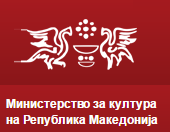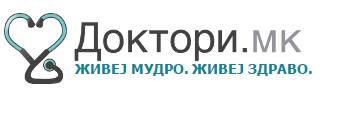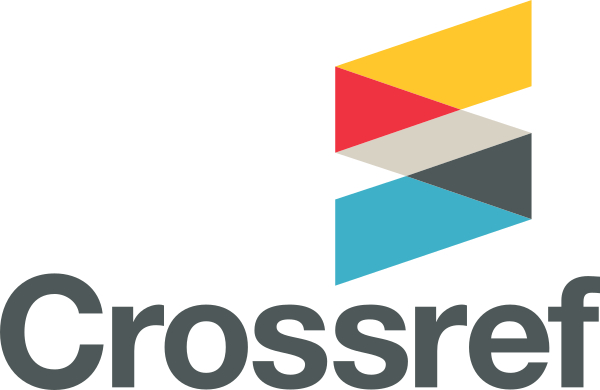JSER Policies
JSER Online
JSER Data
Frequency: quarterly
ISSN: 1409-6099 (Print)
ISSN: 1857-663X (Online)
Authors Info
- Read: 31214
|
БАРИЕРИ СО КОИ СЕ СООЧУВААТ МЛАДИТЕ ЛИЦА СО ИНВАЛИДНОСТ ВО РЕПУБЛИКА МАКЕДОНИЈА НИЗ СЕКОЈДНЕВНИОТ ЖИВОТ
Марија ЦАКИЌ
Филозофски факултет, Институт за дефектологија – Скопје
Марија Цакиќ го одбрани својот магистерски труд на 01.10. 2012 година на Институтот за дефектологија при Филозофски факултет, Универзитет „Св. Кирил и Методиј“ – Скопје, пред комисија во состав: проф. д-р Владимир Трајковски, доц. д-р Зоран Киткањ и доц. д-р Наташа Чичевска – Јованова |
|
BARRIERS THAT YOUNG PEOPLE WITH DISABILITIES FACE IN REPUBLIC OF MACEDONIA
Marija CAKIC
Faculty of Philosophy, Institute of Special Education and Rehabilitation – Skopje
Marija Cakic defended her master thesis on October 01, 2012 at the Institute of Special Education and Rehabilitation, Faculty of Philosophy, University of “Ss. Cyril and Methodius” – Skopje, in the presence of a commission composed of: Prof. Dr. Vladimir Trajkovski, Doc. Dr. Zoran Kitkanj, Doc. Dr. Natasha Chicevska – Jovanova. |
|
Примено: 02.03.2013 Прифатено: 05.03.2013
|
|
Recived: 02.03.2013 Accepted: 05.03.2013 Abstract from defended thesis |
|
|
|
|
|
Резиме |
|
Abstract |
|
|
|
|
|
Магистерскиот труд е презентиран на 117 страници. Трудот ги содржи следниве делови: вовед, теоретски пристап кон проблемот на истражувањето, анализа и интерпретација на резултатите, заклучоци со предлог-мерки, литература и прилози. Во воведот се нагласува за стереотипноста кон лицата со инвалидност во нашето општество, широко распространетата дискриминација и стигматизација како основни бариери при социјална инклузија на лицата со инвалидност. Високиот степен на предрасуди, архитектонски бариери и индиферентниот однос на државата ги ограничува основните права и слободи на лицата со инвалидност. Младите лица со инвалидност немаат секогаш услови и можности активно да партиципираат во сите сфери на општествениот живот, како и останатите граѓани. |
|
The Master’s thesis is presented on 117 pages. The paper contains the following sections: introduction, theoretical approach to the problem of the research, analysis and interpretation of results, conclusions with proposed measures, literature and articles. The introduction emphasizes the stereotype about people with disabilities in our society, the widespread discrimination and stigmatization as fundamental barriers in the social inclusion of people with disabilities. The high degree of prejudice, the architectural barriers and the indifferent attitude of the state restricts the fundamental rights and freedoms of persons with disabilities. Young people with disabilities do not always have conditions and opportunities to participate actively in all spheres of social life, as the other citizens. |
|
|
|
|
|
Основната цел на магистерската теза е да се претстават бариерите со кои секојдневно се соочуваат младите лица со инвалидност во Република Македонија и да се спореди нивото на проблемите во однос на хронолошката возраст, полот и категорија на инвалидност. Во теоретските основи се образложува поимот и дефиницијата на инвалидноста, категориите на инвалидноста кои се опфатени во истражувањето како и бариерите низ секојдневниот живот кај младите лица со инвалидност. Значаен сегмент од теоретските основи се бариерите со кои секојдневно се соочуваат лицата со инвалидност, ограничувачките услови при прилагодувањето на барањата на средината, движењето против маргинализацијата, дискриминацијата, бариерите при вработување, образованието, пристапот до јавни места и комуникација, архитектонските бариери итн. Во истражувачкиот дел се претставени предметот на истражувањето, целта и карактерот, истражувачките прашања, хипотезите на истражувањето, примерокот и временската рамка, методите, техниките и инструментите на истражувањето. Како примерок беа опфатени шест групи на испитаници: категории на лица со инвалидност, лица од општата популација и семејства на лица со инвалидност. Лицата со инвалидност беа поделени во две групи според нивната возраст. Добиените податоци беа групирани, табелирани и со цел да направиме компарација пристапивме кон компјутерска обработка со стандардна статистичка програма SPSS for Windows XP, применувајќи го c2 тест и R x C табели на контингенција. За статистички значајна разлика беше сметана разликата на ниво на значајност од p<0,05. Во делот кој се однесува на анализата и интерпретација на резултатитe, врз основа на истражувањето кое беше спроведено беа претставени резултати добиени од младите лица со инвалидност, поточно бариерите со кои се соочуваат при секојдневниот живот, правејќи споредба меѓу возраста, полот, видот на инвалидноста и етничката припадност. Со потврдување на хипотезите, заклучивме дека младите лица со инвалидност секојдневно се соочуваат со бариери, без разлика на полот, возраста и категоријата на инвалидноста. Бариерите се реперкусираат како резултат на интеракцијата помеѓу лицата со инвалидност и околината, притоа овие бариери ги спречуваат младите лица со инвалидност за целосно учество во општеството. Заклучено е дека односот на општествената средина кон лицата со инвалидност јасно може да се разгледува како општествена изолација, дискриминација, негативни ставови и предрасуди од средината, пониски образовни достигнувања, бариери при комуникацијата, вработувањето, недостаток на јавна пристапност, несоодветни политики и стандарди. Во истражувањето констатиравме дека е неопходно да се спроведе едукација на пошироката општествена заедница за лицата со инвалидност. Предлог мерки се:
|
|
The main aim of the thesis is to present the barriers that young people with disabilities face every day in the Republic of Macedonia and to compare the level of problems in terms of chronological age, gender, and disability category. The theoretical basis gives the explanation of the term and the definition of disability, the disability categories that are included in the survey as well as the barriers in the everyday life of young people with disabilities. A significant segment of the theoretical basis are the barriers faced by persons with disabilities on a daily basis, the limiting conditions while adapting to the demands of the society, the movement against marginalization, discrimination, barriers to employment, education, access to public places and communication, architectural barriers, etc… The research part represents the subject of the research, the purpose and nature of the research questions, the research hypotheses, the sample and the time frame, the methods, the techniques and the instruments of research. Descriptive statistics method of comparative analysis were used in the research. The following techniques were applied in the research: analysis of documents and survey using questionnaires. As sample, six groups of subjects were included: categories of persons with disabilities (persons with intellectual deficit, persons with visual impairments, persons with hearing impairments, persons with physical impairments), persons from the general population and families of persons with disabilities. The persons with disabilities were divided into two groups according to their age (14-18 years the first group and 18-30 the second group). The received data were grouped, tabled and in order to make a comparison we made computer processing with standard statistical program SPSS for Windows XP, incorporating the c2 test and the R x C contingency tables. As a statistically significant difference was considered the difference at the level of significance of p <0.05. In the section relating to the analysis and interpretation of results, based on the conducted research, results obtained from young people with disabilities were presented, in particular barriers they face in their everyday life, making comparison between age, gender, type of disability and ethnicity. The obtained results of the survey were analyzed and interpreted in 13 tables and 14 figures, since four types of questionnaires were applied (questionnaires for persons with disabilities aged 14-18, questionnaires for persons aged 18-30, general population and families of persons with disabilities). We concluded that there is a statistically significant difference in terms of chronological age, the highest percentage is indicated when visiting public places, 100% of the group, aged 14-18, answered affirmatively. In subjects aged 18-30, barriers in formation of marital status 97% gave an affirmative answer. In terms of gender, there is no statistically significant difference. In the category of disability, the majority of respondents who encounter barriers are persons with IP, while people with TIL commonly face barriers when they visit public places. The question about the area in which young people with disabilities often encounter barriers, 45% of the parents and 48% of the general population reported employment barrier. With the confirmation of the hypothesis, we found that young people with disabilities face barriers every day, regardless of gender, age and disability category. The barriers reflect as a result of the interaction between people with disabilities and the environment, and these barriers prevent young people with disabilities to participate fully in society. It is concluded that the attitude of the social environment to persons with disabilities can clearly be seen as social isolation, discrimination, negative attitudes and prejudices of the society, lower educational attainment, employment barriers, communication barriers, lack of public accessibility, inadequate policies and standards. The research concluded that it is necessary to implement education of the wider community for people with disabilities. The proposed measures are:
|
|
Адреса за кореспонденција Марија ЦАКИЌ Кеј 11 Ноември 218 1300 Куманово, Република Македонија Е-пошта: cakic_maca@hotmail.com |
Corresponding Address: Marija CAKIĆ Kay 11 Noemvri 218 1300 Kumanovo, Republic of Macedonia e-mail: cakic_maca@hotmail.com |
Share Us
Journal metrics
-
 SNIP 0.059
SNIP 0.059 -
 IPP 0.07
IPP 0.07 -
 SJR 0.13
SJR 0.13 -
 h5-index 7
h5-index 7 -
 Google-based impact factor: 0.68
Google-based impact factor: 0.68
Related Articles
10 Most Read Articles
- PARENTAL ACCEPTANCE / REJECTION AND EMOTIONAL INTELLIGENCE AMONG ADOLESCENTS WITH AND WITHOUT DELINQUENT BEHAVIOR
- RELATIONSHIP BETWEEN LIFE BUILDING SKILLS AND SOCIAL ADJUSTMENT OF STUDENTS WITH HEARING IMPAIRMENT: IMPLICATIONS FOR COUNSELING
- EXPERIENCES FROM THE EDUCATIONAL SYSTEM – NARRATIVES OF PARENTS WITH CHILDREN WITH DISABILITIES IN CROATIA
- INOVATIONS IN THERAPY OF AUTISM
- AUTISM AND TUBEROUS SCLEROSIS
- THE DURATION AND PHASES OF QUALITATIVE RESEARCH
- REHABILITATION OF PERSONS WITH CEREBRAL PALSY
- DISORDERED ATTENTION AS NEUROPSYCHOLOGICAL COGNITIVE DISFUNCTION
- HYPERACTIVE CHILD`S DISTURBED ATTENTION AS THE MOST COMMON CAUSE FOR LIGHT FORMS OF MENTAL DEFICIENCY
- DIAGNOSTIC AND TREATMENT OPTIONS IN AUTISTIC SPECTRUM DISORDERS – AN OVERVIEW
















